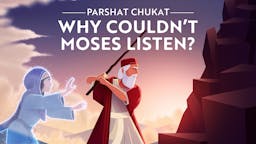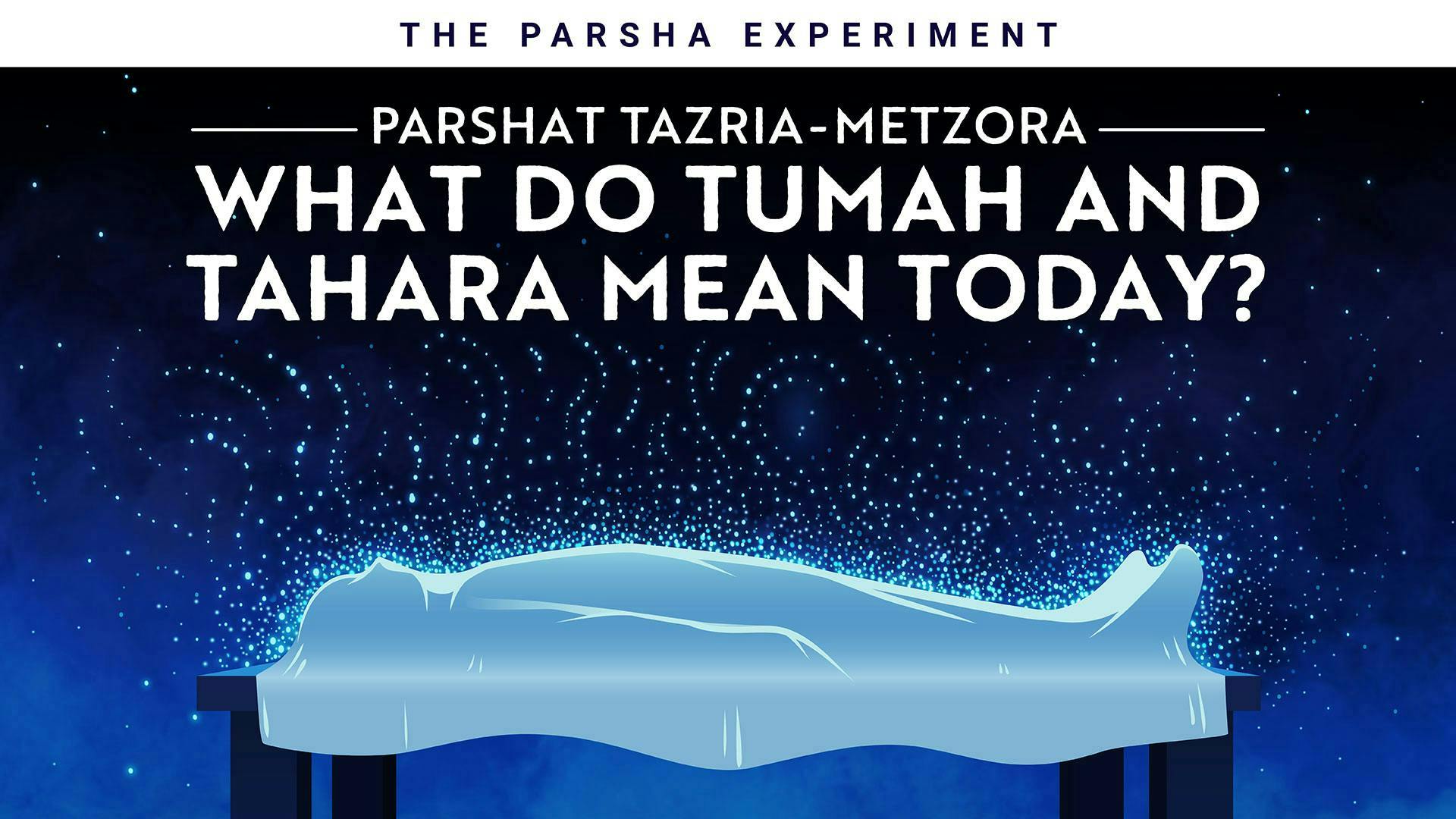What is the Meaning of the Mysterious Red Heifer?
Why is a Red Cow So Important?
By Adina Blaustein | 8 February 2024 | 5 Minute Read
Here are the facts about the red heifer:
Parshat Chukat has one of the most gripping stories in the book of Numbers - the story of Moshe striking the rock. But the parsha gets its name from the opening section, which describes a “chok,” laws related to the red heifer (פרה אדומה).
The verses themselves provide a clear description of what to do with the red cow and it’s overall function. The red cow must be completely perfect. It should be brought to a priest, and slaughtered and burned. The blood of the animal is flicked toward the Tabernacle, and the ashes of the red heifer are then mixed with some other fragrant ingredients, including cedar wood. Once the concoction is complete, the mixture is sprinkled on those who have become ritually tameh (ritually impure) from coming in direct contact with dead bodies. Individuals who are tameh from coming into contact with dead bodies are forbidden in certain activities, like eating the Passover sacrifice. Once these individuals are sprinkled with the dust from the red heifer, the tumah (ritual impurity) is removed and they can participate more fully in ritual activities.
Five mysteries about the red cow ritual:
The verses may present a clear picture of WHAT to do. But as for WHY do we do it? Not so much. The red heifer laws are famously considered among the MOST mysterious in the whole Torah (Bible):
- The mixture of ashes from the burned cow has a key function: it removes the tumah brought on from contact with dead bodies. But despite the critical role the red heifer plays, NO explanation is given in the Torah for WHY the ashes work! Some commentaries even say that the opening words of the unit emphasize that this commandment is a chok, a mitzvah with no clear-cut logical explanation. While not all commentaries agree with the definitions of chok, you can’t escape the fact that the Torah doesn’t provide any logical explanation in this chapter for why the ashes of the red heifer seem to have special powers!
- The mixture containing the ashes of the red heifer are called, in Hebrew “מי נדה - mei nidda.” This term is reminiscent of the menstruating woman - the nidda. What an odd connection!
- The preparation details for the red heifer have some aspects that make it seem like a sacrifice… and yet other aspects that completely break the rules we normally associate with sacrifices. The red heifer is slaughtered outside the Tabernacle, which seems to suggest it’s NOT a sacrifice. However, a priest oversees the proceedings. Additionally, the priest flicks the blood of the cow toward the Tabernacle, which also seems to be similar to sacrifices. But then the cow is burnt…but not on an altar. So the details seem intentionally confusing!
- This might be the most paradoxical mystery. The ashes of the red heifer are used to dispel tumah conferred from contact with a dead body. But the individuals who were involved with the preparation of the ashes become tameh themselves until the evening! It seems bizarre that a ritual that is supposed to remove ritual impurity also somehow conveys ritual impurity!
- When you hear the words tumah, sacrifice, ashes, nidda and priest…I’m guessing you would imagine an episode written in the book of Vayikra (Leviticus), where we get all of the related to this topic. But these laws appear in the narrative-packed book of Bamidbar (Numbers), after the exciting stories of the Meraglim (spies) and Korach’s rebellion. What a strange spot for these laws!
Some resources to help you understand the strange ritual of the red heifer:
When you consider all these mysteries, you see that the red heifer is a complicated episode that builds upon many different key ideas in the Torah. Here are a few resources that can help you address some of these mysteries:
- We noted that the placement of the red heifer in the book of Numbers is exceedingly odd. But the broader context within the book of Numbers can actually provide us with some clues that might help us figure out the meaning of the ritual. Right before these laws are taught is the story of Korach’s rebellion. Amazingly enough, when you take a closer look at the language used in the rebellion, you can start to appreciate why a new approach to death and mourning might be needed at this stage in the Torah. So perhaps the goal of the red heifer ritual is to transform how we relate to death - watch this video to explore this theme more!
- Another mystery that we noted was the usage of language related to menstruation to describe the concoction made from the ashes of the red heifer - the “mei nidda.” In this podcast, Rabbi Fohrman and Daniel Loewenstein discuss the possibility that this linguistic connection is actually a clue that provides a deeper understanding of the meaning of the ritual.
- To understand more about tumah and what it means, watch this video.
- Mitzvot - in general - can feel burdensome. And mitzvot with no clear reason or moral purpose can feel even MORE burdensome. What’s the point of it all? Watch this video for a great perspective on why laws - even those without an explicit moral explanation - are key elements in our relationship with God.
More Meaning Behind What We Do Videos

The Moment Israel Finally Learned Its Lesson
Video • 13 min
Every generation gets a chance to write its own story. In Parshat Chukat, we witness the children of the desert generation face their first real tests. Will they repeat their parents' failures? Or will they finally learn to let go of control and trust in God?

The Deeper Story Behind Moses Striking The Rock
Video • 16 min
In this week’s Torah portion is the famous story of Moses hitting the rock to get water and God subsequently barring him from leading the nation to the land of Israel. Why would Moses do that? What was his thinking? This week, we will explore this question in the context of water, Miriam, and the question of what it means to have faith.
More Meaning Behind What We Do Guides
Meaning Behind What We Do Pages
What is Aleph Beta?
Aleph Beta is a unique kind of Torah library. Led by our founder, Rabbi David Fohrman, we are dedicated to high-level, textual Torah learning for adults that is intellectually and spiritually sophisticated, that enlivens your Jewish practice and helps you forge a deeper connection to God. Whether you’ve been learning in yeshiva for years or you’re just beginning your Torah journey, you’re sure to find something meaningful and surprising waiting for you here.
Browse our library of over 1,000 beautifully produced animated videos, podcasts, deep dive courses, and printable guides. Topics include the weekly parsha, Jewish holidays & fast days, laws & mitzvot, prayers, relationships, big philosophical ideas and more. Have something to say at the Shabbos table that will amaze your family and guests and bring deep meaning into their lives.


